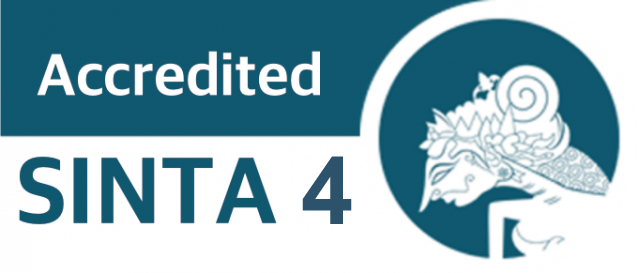The roles of the F move and its effect on classroom interaction
DOI:
https://doi.org/10.21831/ep.v2i1.40512Abstract
This study investigated the role of the teachers' F move in the English as a foreign language (EFL) classrooms and how it affected teacher-student interaction in the classroom. The F move, also known as feedback, is considered an important part of the classroom interaction as it serves two primary roles: evaluative and discoursal. This study used secondary data of classroom interaction during English lesson in two senior high schools in Indonesia. The data were then analysed using the Conversation Analysis (CA) approach. The findings of the current study showed that the teachers used the F move mostly served its evaluative role and there was no evidence of the F move serving its discoursal role. This study suggested the need for teachers to re-evaluate the current teaching practice, especially the way they provided feedback or used the F move as a response to students' answers.
References
Alexander, R. J., & Alex, R. J. (2006). Towards dialogic teaching: Rethinking classroom talk (3rd ed.). United Kingdom: Dialogos.
Beyazkurk, D., & Kesner, J. (2005). Teacher-child relationships in Turkish and United States schools: a cross-cultural study. International Education Journal, 6, 547–554.
Borich, G. D. (2004). Effective teaching methods and study guide (4th ed.). London, United Kingdom: Charles E Merrill Publishing.
Carin, A. A., & Sund, R. B. (1971). Developing questioning techniques; a self-concept approach. Columbus, OH: C.E. Merrill Pub. Co.
Consolo, D. (2000). Teachers' Action and Student Oral Participation in Classroom Interaction. In J. K. Hall & L. S. Verplaetse (Eds.), Second and foreign language learning through classroom interaction (pp. 91–107). United States: Lawrence Erlbaum Associates.
Coulthard, M., & Brazil, D. (1992). Exchange structure. In M. Coulthard (Ed.), Advances in Spoken Discourse Analysis (pp. 50–78). London: Routledge.
Garton, S. (2012). Speaking out of turn? Taking the initiative in teacher-fronted classroom interaction. Classroom Discourse, 3(1), 29–45. doi:10.1080/19463014.2012.666022
Hardman, F. (2011). Teacher's Use of Feedback in Whole-Class and Group-based talk. In N. Mercer & S. Hodgkinson (Eds.), Exploring talk in school: Inspired by the work of Douglas Barnes (pp. 131–150). London: Sage Publications.
Have, P. T. (2007). Doing conversation analysis (2nd ed.). Los Angeles: SAGE Publications.
Lee, Y.-A. (2007). Third turn position in teacher talk: Contingency and the work of teaching. Journal of Pragmatics, 39(1), 180–206. doi:10.1016/j.pragma.2006.02.004
Lemke, J. L. (1991). Talking science: Language, learning, and values. Norwood, NJ: Ablex Pub. Corp.
Liddicoat, A. J. (2011). An introduction to conversation analysis (2nd ed.). New York: Continuum International Publishing Group.
Mehan, H. (1979). Learning lessons: Social organization in the classroom. Cambridge, MA: Harvard University Press.
Morgan, N. and Saxton, J. (1994). Asking better questions. Ontario: Pembroke Publishers.
Schwab, G. (2015). Teaching methods and approaches: Looking into a unique CLIL classroom in Germany. In C. Jenks & P. Seedhouse (Eds.), International perspectives on ELT classroom interaction (1st ed.). United Kingdom: Palgrave Macmillan.
Seedhouse, P. (2004). The Interactional architecture of the language classroom: A conversation analysis perspective. Malden, MA: Blackwell Publishing.
Seedhouse, P., & Walsh, S. (2010). Learning a second language through classroom interaction. In P. Seedhouse, S. Walsh, & C. Jenks (Eds.), Conceptualising learning in Applied Linguistics. Hampshire, UK: Palgrave Macmillan.
Ushioda, E. (1996). Learner autonomy: V. 5: Role of motivation. Dublin: Authentik Language Learning Resources.
Van Lier, L. (1996). Interaction in the language curriculum: Awareness, autonomy and authenticity (2nd ed.). New York: Longman.
Walsh, S. (2002). Construction or obstruction: Teacher talk and learner involvement in the EFL classroom. Language Teaching Research, 6(1), 3–23. doi:10.1191/1362168802lr095oa
Walsh, S. (2013). Classroom discourse and teacher development. Edinburgh: Edinburgh University Press.
Wong, J., & Waring, H. Z. (2009). "Very good" as a teacher response. ELT Journal, 63(3), 195–203. https://doi.org/10.1093/elt/ccn042
Wooffitt, R. (2005). Conversation analysis and discourse analysis: A comparative and critical introduction. London: Sage Publications.
Downloads
Published
How to Cite
Issue
Section
License
Epistema allows readers to read, download, copy, distribute, print, search, or link to its articles' full texts and allows readers to use them for any other lawful purpose. The journal allows the author(s) to hold the copyright without restrictions. Finally, the journal allows the author(s) to retain publishing rights without restrictions
- Authors are allowed to archive their submitted articles in an open access repository
- Authors are allowed to archive the final published article in an open access repository with an acknowledgment of its initial publication in this journal

This work is licensed under a Creative Commons Attribution-ShareAlike 4.0 Generic License.










